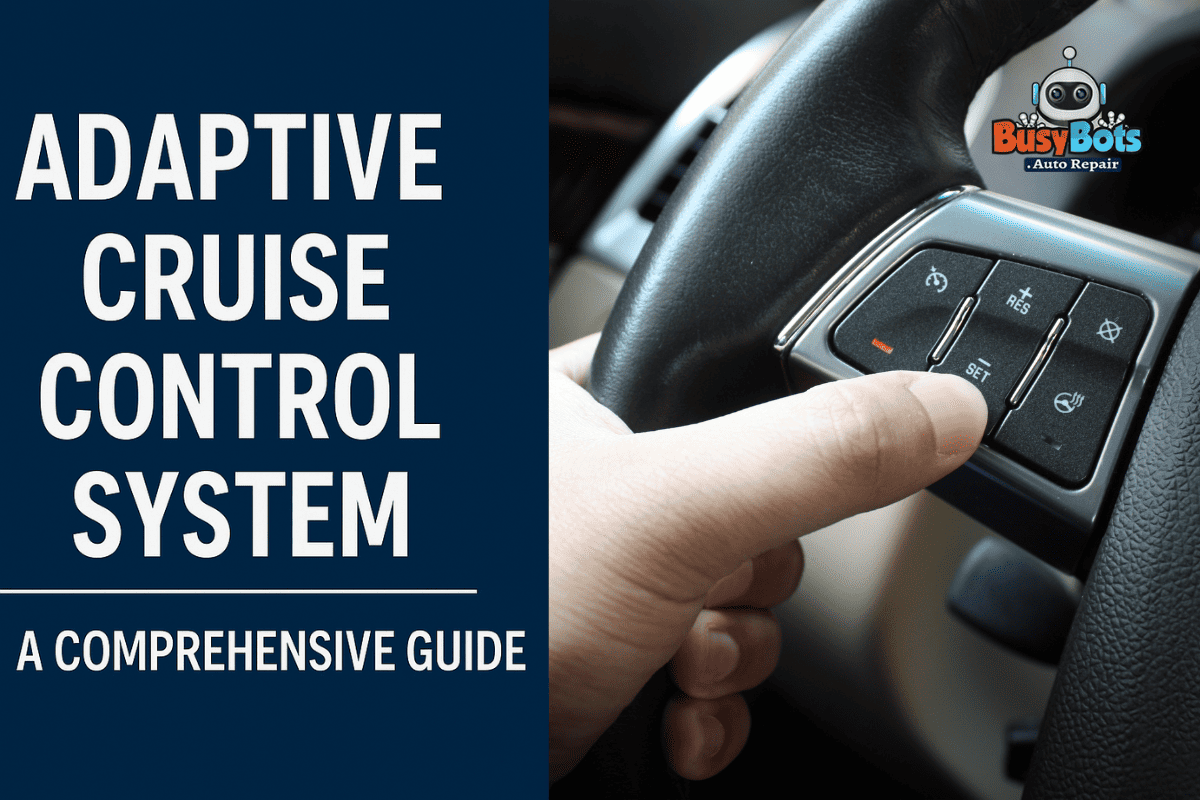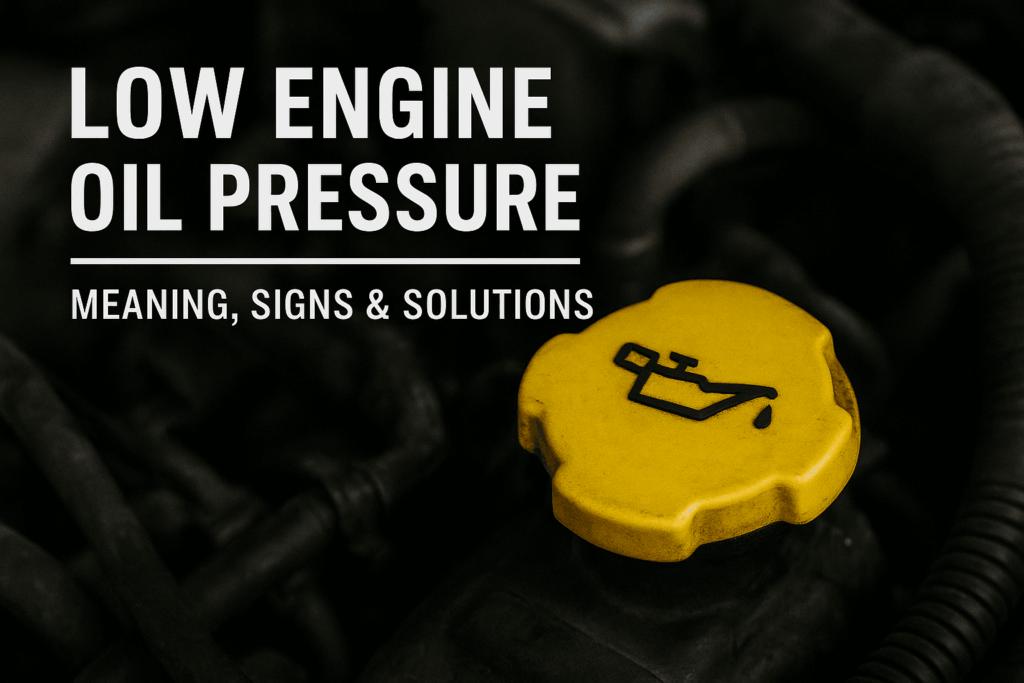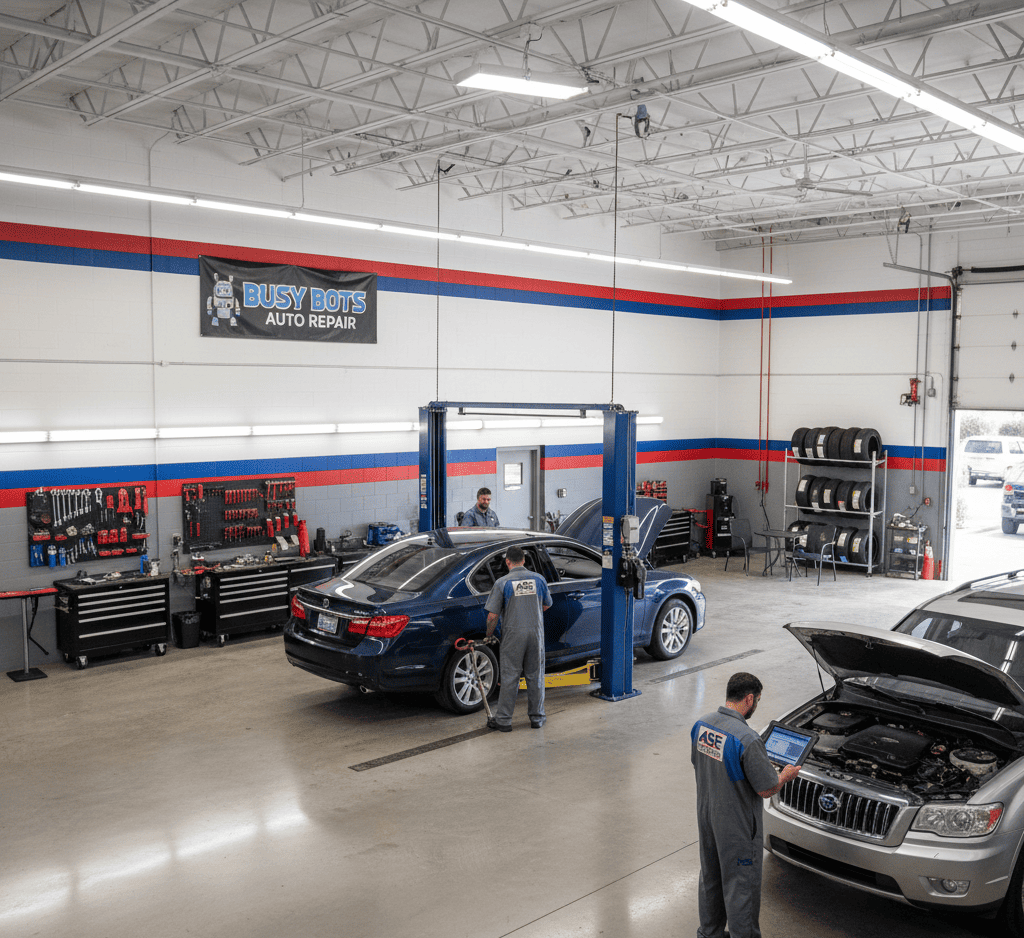Adaptive cruise is one of the most helpful driver-assist features introduced in recent years. Instead of merely holding a fixed speed, modern smart cruise systems monitor the road ahead and automatically adjust speed to keep a safe following gap. This guide explains what these systems do, the real-world benefits, how they operate, step-by-step use, real limitations, and why trusted local shops like Busy Bots Auto Repair are the right choice for diagnostics and calibration.
What is an adaptive cruise system?
Put simply, adaptive cruise replaces traditional cruise control with an intelligent system that manages speed and distance. When activated, it maintains a target cruising speed while continuously measuring the distance and relative speed of the vehicle ahead. If traffic slows, the system reduces throttle — and often applies brakes — to preserve a chosen following distance. When the lane clears, it accelerates back to the set speed. Many manufacturers integrate these systems with other driver aids, making highway driving less tiring and safer.
Benefits of modern intelligent cruise control
- Reduced driver fatigue on long trips. By handling speed adjustments during steady highway traffic, these systems let drivers relax their right foot.
- Enhanced safety margin. Automatic spacing reduces the likelihood of rear-end collisions caused by delayed human reactions.
- Improved traffic flow comfort. Seamless braking and acceleration at moderate speeds make stop-and-go traffic less stressful.
- Potential fuel efficiency gains. Smoother throttle control can lower unnecessary acceleration and braking, improving overall economy in some driving conditions.
- Integration with advanced safety features. When combined with lane-keeping assist or collision mitigation systems, these setups can form part of a broader safety network.
Fact: As advanced driver-assist technologies become more common, a growing number of new models — from compact sedans to full-size trucks — offer intelligent cruises as standard or optional equipment.
How adaptive cruise systems work — the basics
Adaptive systems rely on three core elements:
1 Sensors that “see” the road:
Radar sensors (long-range) are common; they detect distance and relative speed reliably under many conditions.
Cameras (usually mounted near the windshield) identify vehicles, lane markings, and road obstacles.
Ultrasonic sensors or lidar may be used on some platforms for short-range detection and low-speed maneuvers.
2 Control algorithms:
The vehicle’s control module fuses sensor input, calculating relative speed and distance. It decides when to reduce throttle, apply engine braking, or activate the friction brakes. Sophisticated software also accounts for road gradient, vehicle weight, and driver-set preferences.
3 Driver interface and override:
Drivers set a target speed and select a following gap (short/medium/long). The system always expects driver readiness: touching the brake or steering quickly overrides automated control.
How to use an adaptive cruise system — step by step
- Read the owner’s manual first. Each vehicle brand implements features differently; the manual explains limits and procedures.
- Engage at appropriate speeds. Activate intelligent cruise when road and traffic conditions are suitable — typically on highways and freeways.
- Set your desired cruising speed. This is the maximum speed the system will aim to maintain.
- Select a following distance. Most systems let you choose short, medium, or long spacing. Longer gaps are safer in bad weather and for larger vehicles.
- Stay alert. Keep hands on the wheel and be prepared to steer or brake. These systems assist drivers but do not replace them.
- Disable in poor conditions. Heavy rain, snow, fog, or debris that blocks sensors can reduce system effectiveness — switch off adaptive control until conditions improve.
- Use stop-and-go functionality carefully. Systems with low-speed operation can handle traffic jams, but watch for sudden vehicle behavior and be prepared to intervene.
Which vehicles offer adaptive cruise features?
Smart cruise capability is increasingly widespread across manufacturers and price tiers. You can expect to find it as standard or optional on many models from brands like BMW, Mercedes-Benz, Audi, Volvo, Toyota, Honda, Ford, General Motors, and others. It appears on sedans, crossovers, SUVs, and even some light trucks. As automakers add more automated driving functions, intelligent spacing and speed control are becoming a common part of the feature package.
Limitations and safety considerations
- Sensor blind spots: Dirt, frost, ice, or heavy rain can obscure cameras and radar, degrading performance.
- Complex urban driving: Sudden cut-ins, tight intersections, and unpredictable pedestrian activity pose challenges for automated speed control.
- False confidence: Overreliance on automation can reduce driver vigilance. Always remain ready to take control.
- System inconsistencies: Different makes and models behave differently; a system tuned to be “gentle” may not react like a sportier setup. Understand how your vehicle behaves.
Maintenance, calibration, and professional checks
Adaptive systems rely on precise sensor alignment and current software. If your car has had windshield replacement, collision repair, or suspension work, sensors may need recalibration. Cameras and radar must be cleaned and kept free of obstruction. Regular software updates may also improve detection and performance.
For these tasks, trust a professional shop with dedicated ADAS equipment and trained technicians. Busy Bots Auto Repair provides in-house calibration, diagnostic scans, and repair services using factory-level tools. Their technicians are experienced in recalibrating cameras and radar after glass replacement, body repairs, or suspension work — ensuring systems operate to manufacturer standards.
Final notes — balancing convenience and responsibility
Adaptive speed control is a powerful tool that enhances comfort and safety when used correctly. It helps drivers manage long highway journeys and improves reaction consistency in traffic. However, it is an assistive technology, not a substitute for attention and sound driving practices.

If you own a vehicle equipped with this technology, review the owner’s manual, understand your system’s limits, and keep sensors clean and properly aligned. After collision repairs, or when windshield or bumper work has been performed, schedule a professional recalibration to restore full system functionality. For Las Vegas drivers seeking reliable, local service, a certified repair shop that offers ADAS calibration — such as Busy Bots Auto Repair — can provide the expertise and equipment to keep your vehicle’s assist systems working safely and reliably.
FAQs:
What is adaptive cruise control?
Adaptive cruise control (ACC) is an advanced driver-assist feature that automatically adjusts your car’s speed to maintain a safe distance from the vehicle ahead.
When was adaptive cruise control invented?
The first versions of adaptive cruise control appeared in the late 1990s, with radar-based systems becoming more common in luxury cars by the early 2000s.
What does adaptive cruise control problem mean?
It means the system has detected an issue—such as a faulty radar sensor, camera misalignment, or software error—that may affect its ability to function properly.
What year was adaptive cruise control introduced?
Adaptive cruise control was first introduced in production vehicles around 1999, with Mitsubishi and Mercedes-Benz among the early adopters.
Difference between automated cruise control vs cruise control?
Standard cruise control keeps your car at a constant speed, while adaptive cruise control automatically adjusts speed based on traffic conditions.
How does adaptive cruise control work?
ACC uses radar, cameras, or both to detect vehicles ahead and then accelerates or brakes as needed to maintain a safe following distance.






No comment yet, add your voice below!